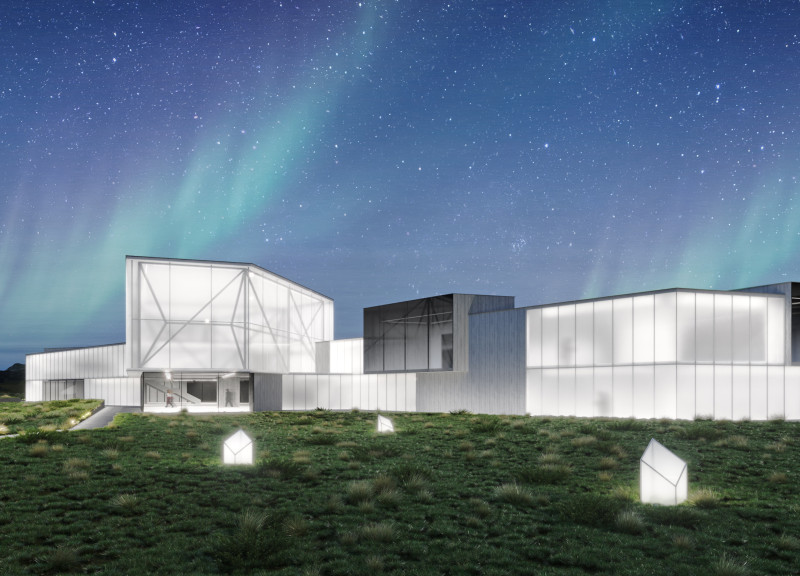5 key facts about this project
The Iceland Volcano Museum presents a thoughtful design that responds to the unique geological features of Iceland. Located in a striking landscape shaped by volcanic activity, the museum seeks to educate visitors about the significance of volcanoes in a clear and engaging manner. The structure embodies a concept that ties the building to the surrounding environment, creating a dialogue between the architecture and the landscape.
Volume-Spatial Composition
The design features a composition of central volumes and formations that resemble natural geological shapes. This arrangement encourages movement and reflects the transformative processes associated with volcanic eruptions. Light filters through transparent elements, enhancing the visitor experience by connecting inside spaces to the outdoor landscape. Each area within the museum is designed to evoke the natural world that surrounds it.
Pathways and Pavilions
Walkways extend from the main building in a manner similar to flowing lava, guiding visitors as they explore the exhibits. These paths create opportunities for reflection and interaction along the way. Pavilions placed strategically along the promenades invite natural light and highlight views of the exterior, allowing visitors to enjoy the scenic environment. Surrounding these structures, the use of stone fragments establishes a strong connection to Iceland’s volcanic landscape.
Functional Spaces
The museum is designed as a three-story facility focused on exhibitions. Each floor houses spaces that can host a variety of educational displays, offering flexibility for different topics. On the first and second levels, office spaces support the museum’s operations, accommodating around 30 to 40 staff members. A café is included to serve 30 to 40 guests, providing a space for socializing and encouraging visitors to engage further with the exhibits.
Visitor Capacity and Experience
With a goal to welcome up to 500,000 visitors annually, the museum functions as both a place for learning and cultural gathering. The design encourages visitors to connect with the exhibits in a meaningful way. It offers opportunities for exploration and supports a deeper understanding of the geological processes that shape Iceland’s landscape.
A notable detail is found in the outdoor stone elements that reflect the forms seen in volcanic sites, reinforcing the connection between the structure and the natural world it represents.























































